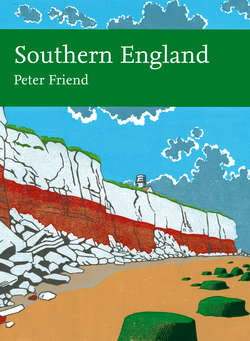Читать книгу Southern England - Peter Friend - Страница 36
Landscape B: The Lizard
ОглавлениеLizard Point is the most southerly headland in Britain, part of a wider Lizard landscape comprising a flat heathland plateau bounded by dramatic cliffs and small coves (Fig. 60). Notice how steep many of the sea cliffs are, and that they show little in the way of well-developed, regular layering or fracturing. Unlike the other upland areas of Cornwall, the Lizard is not underlain by granite. As mentioned in the general section of this chapter, some of the area is underlain by serpentinite, a distinctive, decorative rock that was originally part of the Earth’s mantle, below the crust and many kilometres below the surface (see Chapter 3). Other parts of the Lizard bedrock were originally basalt lavas and minor sheet-like intrusions along with small amounts of sediments, all similar to successions elsewhere that appear to have formed in or below the Earth’s oceanic crust. During the Variscan mountain building, this mixture of distinctive bedrock types appears to have been squeezed up amongst the strongly compressed Devonian killas. Today, the exceptional bedrock chemistry of the unusual Lizard rocks is the reason why the peninsula has such a variety of rare plant habitats. Much of the peninsula is a National Nature Reserve (NNR) or owned by the National Trust.
As in Carnmenellis and Land’s End, a wave-cut platform has been identified on the Lizard, although its level is rather lower. In fact, the platform actually forms the Lizard Plateau and is remarkably flat, the ground surface varying between 60 and 100 m above sea level over large areas. This relative flatness probably reflects the rather uniform composition of the rock materials involved, and their uniform resistance to weathering and erosion.
The coast of the Lizard Peninsula is formed almost entirely of steep cliffs, particularly around its southwestern perimeter. A few small beaches do occur in sheltered locations, such as at Coverack (b1), and picturesque fishing villages are scattered along the east side of the peninsula around small coves and gullies.
FIG 60. The Lizard coastline. Note the contrast between the jagged coastal cliffs and the flat inland landscape. (Copyright Dae Sasitorn & Adrian Warren/ www.lastrefuge.co.uk)
